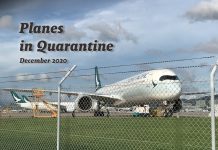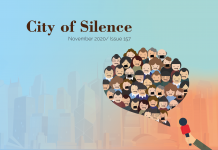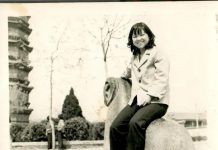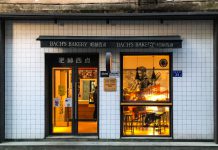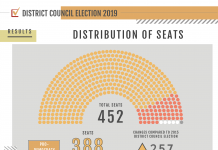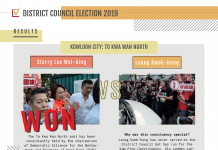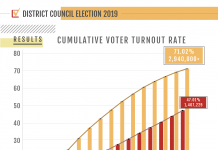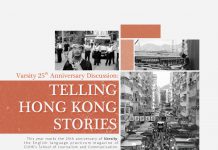Local marathons are just not enough. Feel the difference and try international marathons!
Reporter: Cherry Ge
As he ran through the heart of Frankfurt, Ng Che-ming’s spirits were lifted by the crowds who had turned up to cheer the runners on. But an even bigger welcome was in store as he sped along the hundreds of metres of red carpet to the indoor stadium at the end of the 42-kilometre marathon. He crossed the finishing line in a blaze of coloured lights and, best of all, he could see his moment of triumph “live” on a huge TV screen and hear the host reading out his name. Hot soup, soft drinks, beer and fruit were on hand for the runners to take in some energy.
Ng, a 59-year-old Hong Konger, completed his 100th full marathon last month but he tells Varsity that the most unforgettable race in his life to date was the Dresdner Kleinwort Frankfurt Marathon in 2007.
In the past 11 years, the marathon fanatic has left his footprints in 40 cities in countries around the world, including China, Japan, Korea, Taiwan, Malaysia, Singapore, Germany, Italy, France, Greece, Denmark, the United States and Australia.
“Marathons give me a chance to compete with world-class athletes in the same competition,” Ng says as he explains why he fell in love with the long run at his first Hong Kong Standard Chartered marathon in 2000. “Although it is impossible to win a medal, satisfaction can still be gained.”
What attracts Ng to overseas marathon races are the challenges presented by different courses, the warm support from local citizens along the way and their respect for the sport and the athletes.
Ng says the routes of these overseas marathons take runners mostly through urban areas. When the runners are striving to get their best times, local citizens can watch them go by and show their support by applauding and cheering them on.
He feels he gains respect as an athlete by participating in international marathons. Since he retired two years ago, he now has the time and freedom to pursue his great love of running around the world.
Chong Hiu-yeung, a 32-year-old journalist and freelance writer does not have the same degree of freedom that Ng has but that has not stopped him from embarking on his own marathon journey. He ran his first overseas marathon in 2006 in Singapore and has taken part in races in 14 cities since then.
Chong’s marathon itinerary has also taken in cities such as Barcelona, Paris, Tromso in Norway, Athens, Los Angeles and Samui in Thailand. He agrees with Ng that overseas marathons are more fun and special.
He says it is not just that it sounds “cool” to tell people that he is running overseas, but that the concept and understanding of marathons actually is quite different in other countries.
“In Hong Kong, it is just a race,” Chong says. “In Europe, a marathon means a party over a weekend for all the people including the runners.” Some foreign organisers even hold exhibitions for all marathon fans to buy souvenirs of the race.
The time limits in overseas races are also more generous than in Hong Kong. This ensures that every runner or walker can finish. For example, when he ran the Singapore marathon in 2006, there was a time limit of eight hours and almost every participant finished the race. In Hong Kong, the time limit for the Standard Chartered full marathon is just six hours.
Thanks to the generous time limit, Chong managed to finish the race and take lots of photos along the way. However, his finishing time was not good as he did not have a rigid and systematic training plan for the race.
Chong’s overseas marathon experience has also led to some unforgettable moments. He proposed to his fiancée during the Prague Marathon in the Czech Republic. He recalls the day when the Prague Marathon organisers prepared a special bib for him with the words “Will you marry me?” on it. They also gave him a bunch of flowers at the 41km point of the race. As he crossed the finishing line, the organisers even changed the music for him. It was a romantic moment.
Compared with the distinctive routes and warm support found in overseas marathons, Hong Kong appears to offer a less satisfactory experience.
There are only two marathon races: the China Coast Marathon organised by the Athletic Veterans of Hong Kong (AVOHK) and the Standard Chartered Hong Kong Marathon, which has been organised by the Hong Kong Amateur Athletic Association since 1997. The former is more challenging because of the design of the course in Pak Tam Chung, Sai Kung. This makes it less popular than the Standard Chartered version which attracted around 65,000 participants in 2011.
Despite the high number of participants, there have been many complaints about the routing and organisation of the Standard Chartered marathon.
Chong writes in his blog that a great sports event should not just be a game but an event that strengthens a city’s spirit and its citizens’ sense of belonging.
He says that runners in Hong Kong do not come into contact with the streets that show the real Hong Kong as they are running on the highway for almost 99 per cent of the route. This disappoints him. He sees it as a failure to unite the community through sport.
One runner who has participated in both local marathon races and found them lacking is 56-year-old psychiatric nurse Fung Kwei-lap. What upsets him the most is the lack of support from the government, other local residents, and even family and friends.
As both of the races are run outside the urban areas, there is nobody by the roadside to cheer on the runners. “Sometimes I felt so alone as I was running along the road. The training and running are already very difficult and harsh. When there is no support, this can easily make a runner want to give up,” he says.
Only the famous Standard Chartered marathon “three bridges, one tunnel” landmarks bear witness to the success or failure of the participants as they pound along the highways. Once, when Fung was running along the Route Three highway, he was scolded by a truck driver for blocking the road.
In the final stage of the race, runners do pass through urban areas like Wan Chai and Causeway Bay and, for safety’s sake, the police clear the roads in these areas for the race. However, unlike other cities, not everyone supports the runners. Sometimes, they even reprimand them. Fung says the police have even been known to hold up the runners to let pedestrians pass and they make it clear they just want to re-open the area as soon as possible.
What makes matters worse, says Fung, is that family members and friends are not allowed to wait for participants at the end of the race. “Training for a marathon is harsh and time-consuming. I just want to share my joy with my family and friends as I finish one.”
Although Fung and others find the race unsatisfactory, they still support the event simply because they are local runners. Sadly, in Hong Kong, marathon runners are not respected.
Talking about his marathon experience in the 113th Boston Marathon, Fung gets fired up when he remembers the respect Bostonians showed him. The Boston Marathon is the world’s oldest annual marathon race and one of the five World Marathon Majors. When he crossed the finish line he was greeted with joyful congratulations.
Despite the dividends for Hong Kong runners to race overseas, it is not always easy to arrange. “The most difficult things are money and holidays,” says Chong Hiu-yeung. “You cannot travel too much when you have a job.”
Fung has some tips for those who manage to find the time and money. He chooses races which are not too difficult in cities with nice weather. Ease of application and convenient transportation are also factors.
For example, it is easy to find information about marathons held in mainland cities online but it is rather complicated to register for the races because they do not usually accept credit card payment. Overseas, Eastern European races are less popular with Hong Kong runners because they are difficult to get to.
You can either organise your own trip or use the travel agencies and marathon clubs that organise tours for runners in international marathons like those in Taiwan and Seoul or further afield in Europe and the Gold Coast in Australia.
The costs are not as high as might be expected. For short trips in East Asia, such as Korea and Taiwan, it usually takes only four to five days and cost HK$4,000 HK$5,000 per person, in Fung’s experience. Trips to Japan and long-haul destinations like Europe or the US are more expensive. They usually take more than a week and cost at least HK$10,000. However, Fung says there is no big difference between marathon trips and ordinary travelling. “You only need to take one day to run and a little time on the day before to check out the route,” Fung adds. “Then, you can travel around according to your trip schedule.”
The most popular race in Asia for Hong Kong people is the Tokyo Marathon held in February every year. The last race attracted 330,000 applicants but only around 33,000 participants took part after their names came up in a lucky draw. Organisers encourage foreign runners to take part in order to promote international friendship. The first 3000 runners who apply as charity runners are guaranteed a place.
According to the marathon’s organisers, there were more than 2,787 foreign runners in this year’s race, of which 534 were from Hong Kong or China.
Fung has taken part in the Tokyo Marathon twice and each time found there were many Hong Kong people participating. He says the event is like a “carnival”. The Japanese applaud and cheer on the runners and prepare food for everyone to enjoy.
Although the application fee costs over HK$1,200, Fung believes it is well worth it.
Fung believes from the evidence of his own overseas travels that more and more Hong Kong people are taking part in marathons abroad. “If you are free and able to run in a marathon race, you will definitely want to try overseas races. You can feel it is different as you run,” he says.



